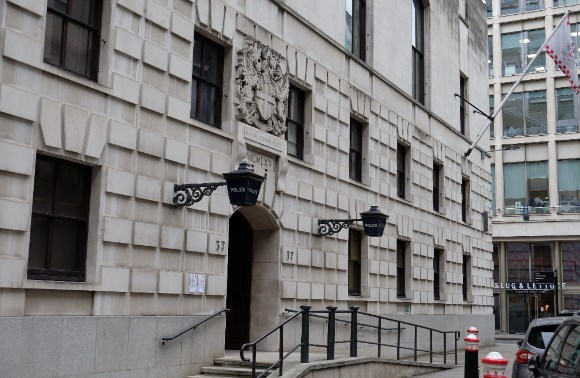This website uses cookies
This website uses cookies to enable it to function properly and to analyse how the website is used. Please click 'Close' to accept and continue using the website.



The Twentieth Century Society has voiced major objections to the recently submitted proposals by Seven Architecture for the Grade II* listed police station on Wood Street in the City of London. It was built to the designs of McMorran and Whitby, a post-war practice that worked in a classical idiom, which was for a long time considered unfashionable. The quality and invention of their buildings has however been recently reassessed and a number of their works are now listed. Wood Street Police Station was McMorran’s last major project before he died in 1965 and is considered to be his masterpiece. It is the only post-war police station to be listed.
The building has been studied in the Twentieth Century Society book on McMorran & Whitby by Edward Denison and is described in this as ‘the greatest success of McMorran’s lifetime… a work of art that defines McMorran’s philosophies succinctly. It is an Italianate composition harking back to his favourite architect, Michele Sanmicheli, yet is rooted firmly in Britain and in the 20th century’.
The police station is made up of two distinct elements; a four-storey courtyard range and a tower, which originally housed an extraordinary number of spaces including offices, flats, stables, Turkish baths, cells, a tailor and a small museum. These are all configured behind beautifully composed yet austere facades, which give little away as to the quality and variety of what is inside.
The City of London Police force intends to consolidate all of their operations within Wood Street, which in its current form cannot accommodate requirements. As a result, a number of proposals have been submitted which the Society considers will harm the outstanding significance of the building. The most damaging of these is a proposed tower extension which will connect to the existing by a glazed link at each level – not only marring the original tower’s north elevation, but wholly undermining the careful balance and legibility of the built ensemble. Other proposals include the infilling of the courtyard, the replacement of all external windows and the conversion of the tower to open plan offices. Taken together, the Society considers that these constitute substantial harm in planning terms.
Tess Pinto, Conservation Advisor to C20 Society, said: “The approach has been to try and squeeze as much extra space as possible on to an extremely tight and sensitive site, around a historic building of outstanding significance. The Society has suggested from the outset that the police station has the potential to make a fantastic boutique hotel, for example – and we don’t consider that the applicants have properly demonstrated that the buildings couldn’t be better conserved through a change of use.
“What is of serious concern is that despite our advice at pre-application, there does not appear to have been a comprehensive conservation management plan to guide the formation of these proposals from the outset, despite the fact the building is Grade II* and the only listed post-war police station.”
Historic England has also objected to the proposals, although do not consider the harm to be ‘substantial’ because the tower extension has been reduced in height. This means that the application will be referred to the Secretary of State. The Society will be supporting this referral and requesting the application is taken to a public inquiry should the planning committee be minded to grant permission.
For press enquiries:
Tess Pinto, Conservation Advisor, Twentieth Century Society
tess@c20society.org.uk
020 7250 3857

Become a C20 member today and help save our modern design heritage.